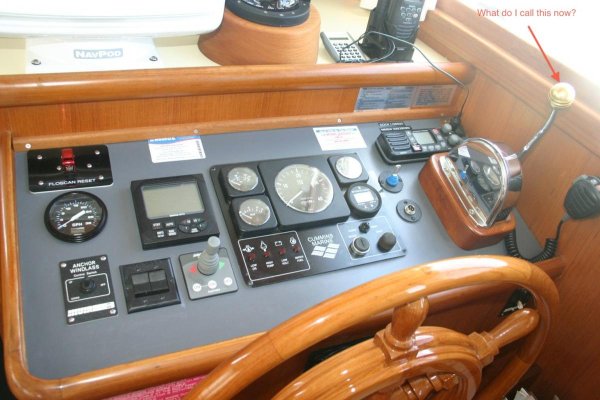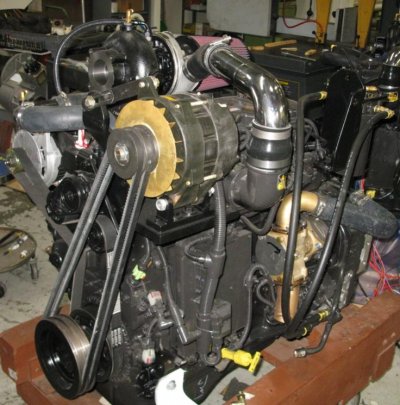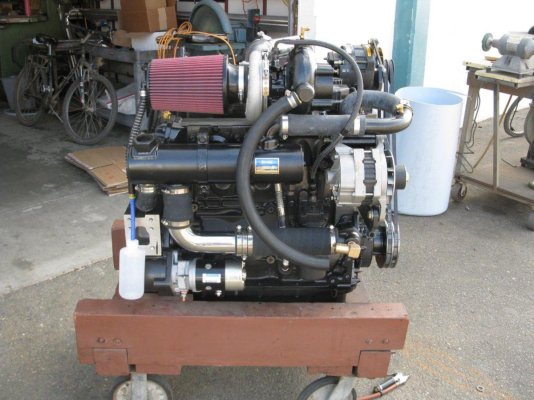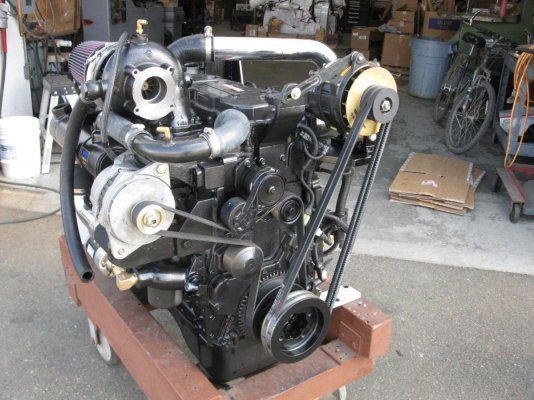- Joined
- Oct 1, 2007
- Messages
- 7,331
- Location
- Texas
- Vessel Name
- Floatsome & Jetsome
- Vessel Make
- Meridian 411
We will use electronic common rail engines just for simplicity. It is my understanding that on some of these model engines, all that is done to make them "commercial grade" or rating is electronically turn down the governor basically "de-rating" the engine. Is this a true statement(I realize not all encompassing")?
Okay....I did a quick search and Cummins has a QSB 4.5L rated at 99-160hp at 2000-2500RPM with "numerous rating available".
I would assume this is the exact same motor with just an electronic adjustment to the governor which limits RPM/power and then they attach a "rating" to it?
NOW... what Eric was talking about on the other thread. If this engine is in my boat in it's higher HP rating, I would have the prop pitched to achieve that RPM....2500 in this case. And if it is in my boat in the lowest rating, I would increase the pitch on my prop to achieve the lower RPM...2000 in this case. I am assuming these statements to be correct.
NOW...let's simply switch propellers. Why all of the sudden am I overpropped on a boat with the exact same engine??? And what if I "promise" not to run the higher power engine over 2000RPMs...would that be the same.
I realize I am making assumptions here that may not be true and then asking questions based on the assumptions(ie are these two examples of engines EXACTLY the same other than the governor setting). If they are not exactly the same...can we assume they are for theoretical purposes? But I do believe them to be the same.
DISCUSS!!!!
PS...likely a question for the folks at boat diesel but thought I would put it on here so we can all learn!
Okay....I did a quick search and Cummins has a QSB 4.5L rated at 99-160hp at 2000-2500RPM with "numerous rating available".
I would assume this is the exact same motor with just an electronic adjustment to the governor which limits RPM/power and then they attach a "rating" to it?
NOW... what Eric was talking about on the other thread. If this engine is in my boat in it's higher HP rating, I would have the prop pitched to achieve that RPM....2500 in this case. And if it is in my boat in the lowest rating, I would increase the pitch on my prop to achieve the lower RPM...2000 in this case. I am assuming these statements to be correct.
NOW...let's simply switch propellers. Why all of the sudden am I overpropped on a boat with the exact same engine??? And what if I "promise" not to run the higher power engine over 2000RPMs...would that be the same.
I realize I am making assumptions here that may not be true and then asking questions based on the assumptions(ie are these two examples of engines EXACTLY the same other than the governor setting). If they are not exactly the same...can we assume they are for theoretical purposes? But I do believe them to be the same.
DISCUSS!!!!
PS...likely a question for the folks at boat diesel but thought I would put it on here so we can all learn!
Last edited:







